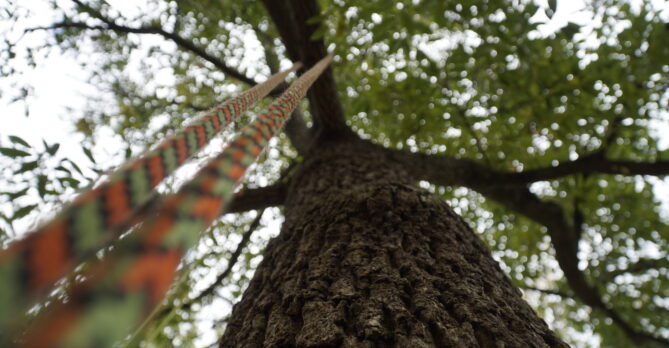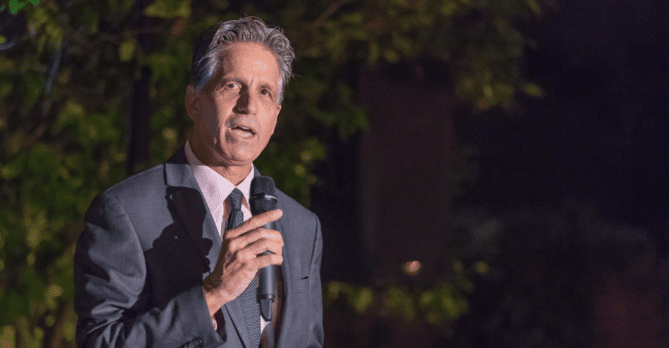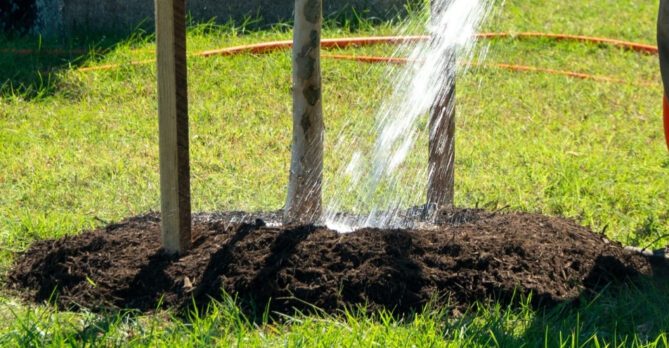
As fall settles in around us, shorter days and cooler nights inspire us to pick our pumpkins and make our favorite comfort food. But for deciduous trees, fall is the signal that their dormant season is approaching.
Unlike their evergreen counterparts, which remain mostly green throughout the year, deciduous trees—such as oaks, elms, and maples—change color, drop their leaves, and pause growth during the winter months.
In other words, deciduous trees give us the showy fall foliage that we all look forward to every year.
WHY TREES CHANGE COLORS
In just a few weeks, the DC area’s peak fall foliage will be upon us, and the city will be enveloped in vivid shades of gold, orange, and red, so intense they seem to glow.
But how does this happen, and why?
This captivating transition is triggered by a combination of dwindling daylight and cooler temperatures, which signals to the tree that it’s time to shut down for the winter. Guided by these environmental cues, trees begin transporting nutrients down to their roots for storage, reducing their support to their leaves, and hardening off to protect themselves from harsh winter conditions.
The tree’s production of chlorophyll, which gives leaves their lush green color, also begins to wane. As the chlorophyll fades, brilliant shades of orange and yellow that have been hiding in the leaf all year finally get their moment to shine. And those deeper red hues you might see? Those are actually produced in the fall from sugars trapped in the leaves. Red colors appear most vibrant on cool, sunny days when the chilled air traps sugars in the leaves and the sunlight reacts with them to create bright reds and purples.
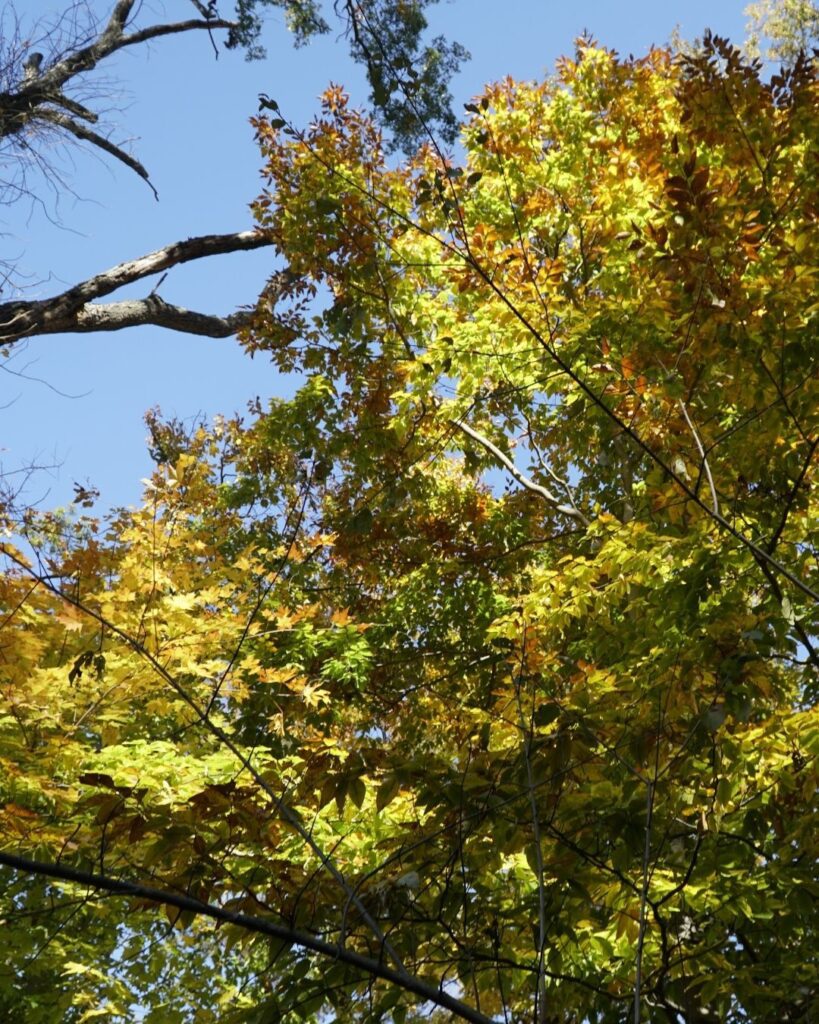
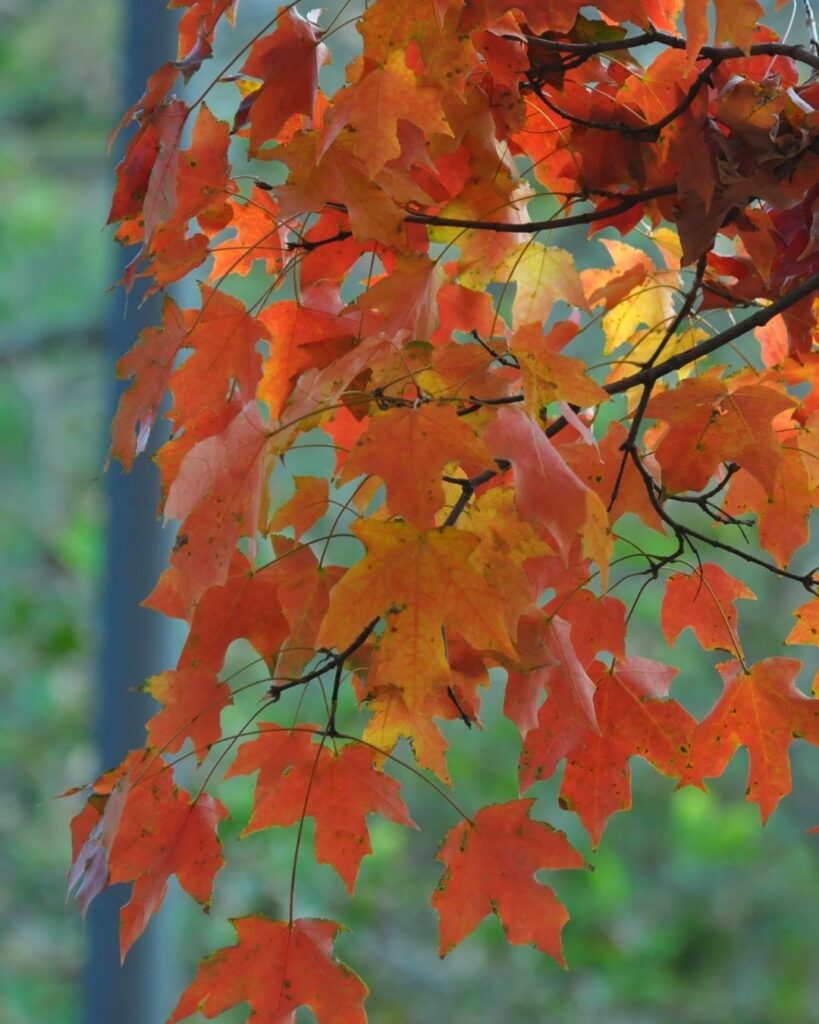
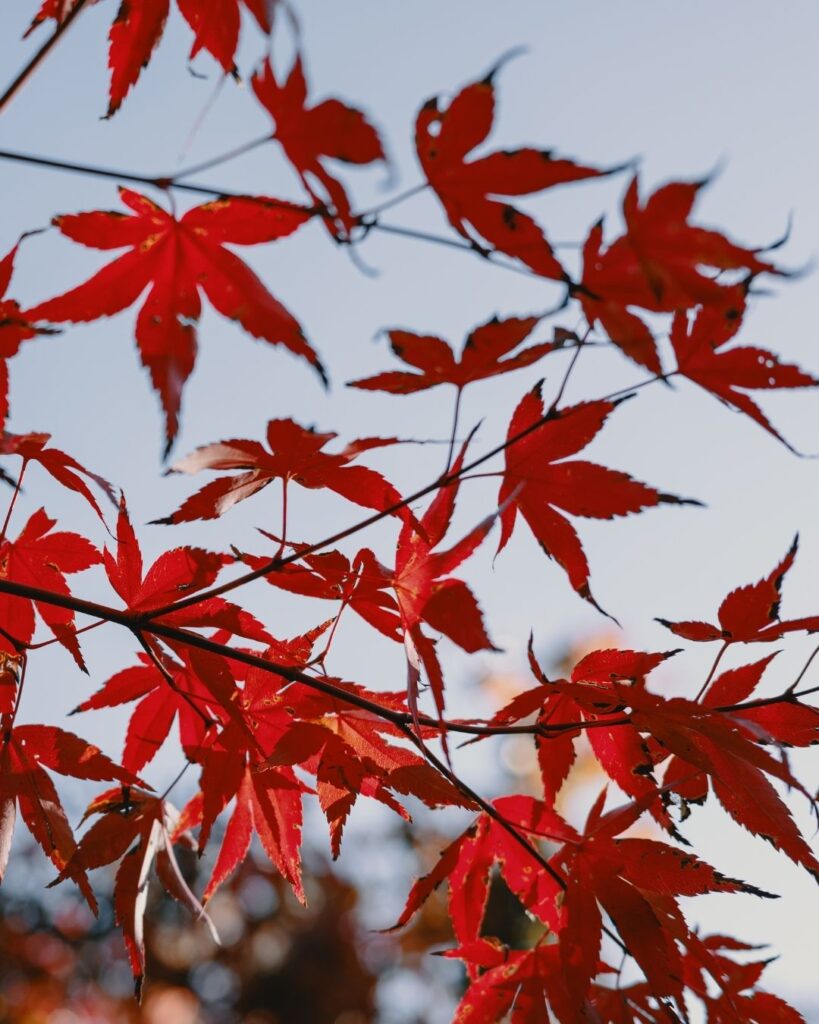
HOW ENVIRONMENTAL FACTORS CHANGE COLORS
Every year, we look forward to this spectacle and wonder just how breathtaking the colors will be. While it’s difficult to predict the intensity of fall color, the ideal conditions for vibrant colors actually start well before the fall equinox.
Adequate soil moisture throughout the year, combined with sunny, cool temperatures right as the days begin to shorten, will produce an array of fiery fall colors.
However, warm and dry weather conditions in the late summer and early fall can cause leaves to drop early—before we even reach “peak” fall foliage season. When this happens, leaves shut down early and skip the magical period when we usually get to enjoy the changing colors.
As our weather patterns become more erratic due to climate change, the transition to fall colors may become less pronounced and less predictable.
LEAVE THE LEAVES
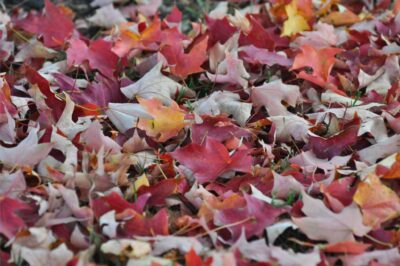
For some, fallen leaves can feel like a nuisance or a chore to clean up. The good news? In most cases, you can simply leave them where they fall.
Fallen leaves are nature’s mulch, providing nutrients and other materials that break down into the soil, improving plant health and supporting beneficial organisms.
In fact, leaves are an important part of an ecosystem. That said, in the city, when leaves pile up on sidewalks and decompose on our streets, they can sometimes create a slip hazard for pedestrians and cyclists. If that’s your situation, one way to still reap the benefits of leaf material is to compost the leaves and add them back to the soil in the spring.
Either way, the next time you’re pulling out the rake and leaf bags, you can think twice about the job. You might just decide to let nature do its work.
In the DC area, fall foliage is expected to peak around late October. While you wait, you can explore the different fall tree species in the District and find your favorite with Casey Trees’ Fall Foliage map.

Jessie Ward is a Research Technician with Bartlett Tree Research Laboratories and a research collaborator with Casey Trees. She is an ISA-certified Arborist and TRAQ certified. She holds a B.S. in Biology from James Madison University and M.S. in Forest Resources from Penn State, as well as field experience in production arboriculture, plant health care, and forest ecology.
